The finalized text for the Sustainable Development Goals was published on August 1st. I was curious to see what it had to say on sustainable food and agricultural systems. I summarize my thoughts below for a quick impression; thereafter you can find a blow-by-blow list of all instances where the SDGs mention food or agriculture with my comments. Your thoughts are obviously very welcome too!
In general, I was positively surprised by the level of detail and thoughtful suggestions in the SDGs when addressing food security. While it doesn’t go so far as to recognize food sovereignty, the importance and needs of smallholder farmers are recognized, important barriers to their success are identified, and the international community is committing itself to invest in improving sustainable and efficient practices.
Of course, the devil lies in the detail. What is still not addressed, and yet so so relevant for future sustainable food systems, is the type of food consumption we are striving toward. See, especially in the context of sustainable development it is important to consider what kind of demand we want to create in the years to come.
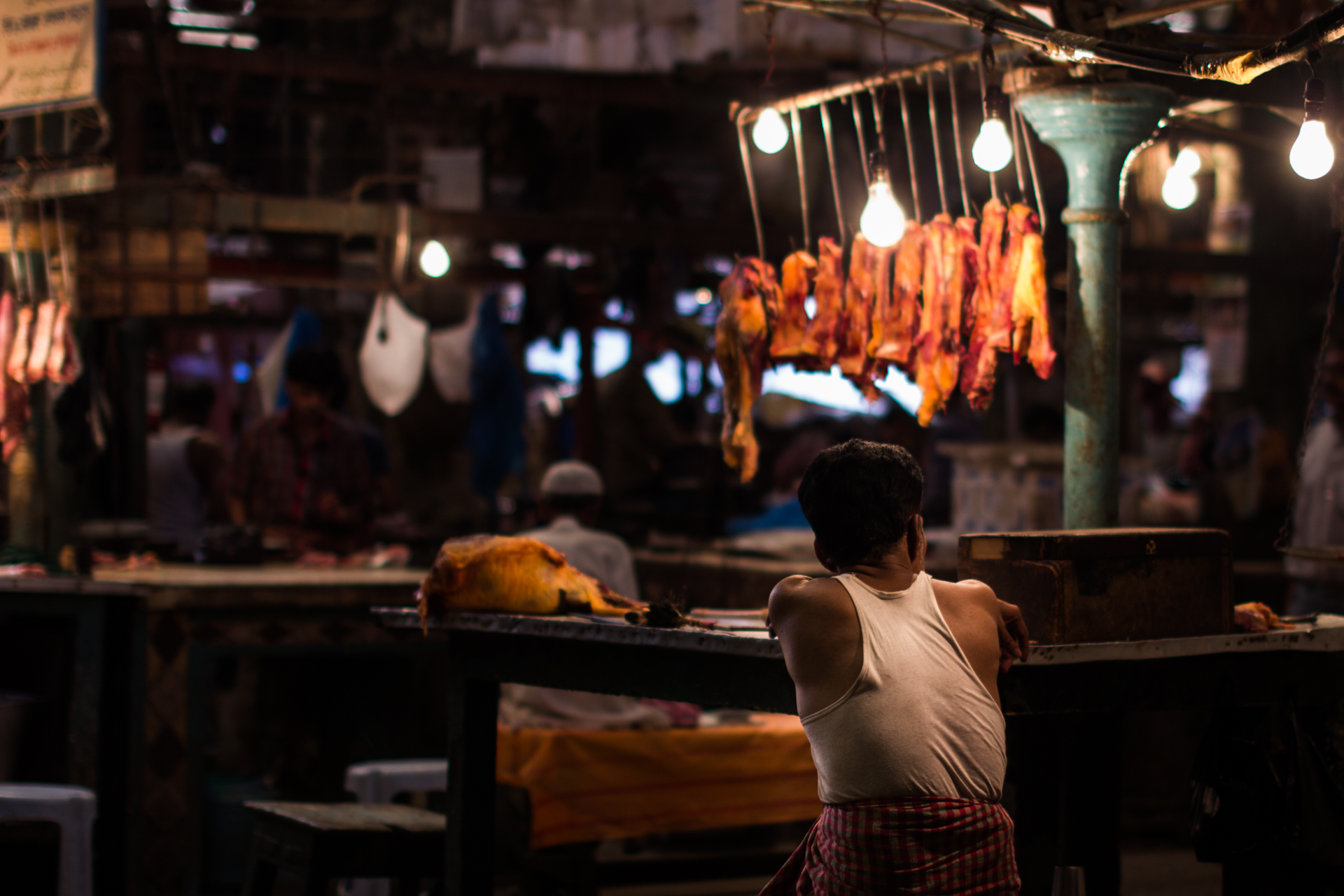
As emerging economies shift to diets high in meat and processed foods, and away from their staple foods, as well as to evermore urbanized societies that are reliant on food being produced by others – whether their own agricultural backwaters or multinational corporations -, the debate on sustainable food in the context of development goes beyond empowering smallholder farmers, though that is definitely a worthy goal.
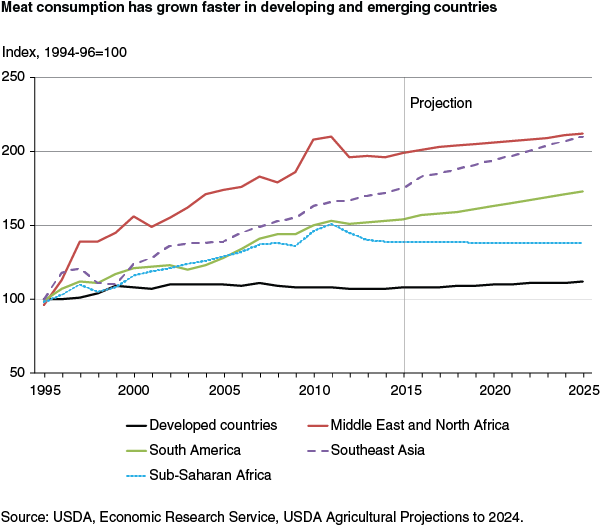
Per capita meat consumption for beef and veal, pork, and poultry has grown around 3 percent annually in developing and emerging economies (DEE) since the mid-1990s and has now surpassed that of the developed world.
Given that two-thirds of the world’s population lives in the DEE, with its relatively faster population and income growth, potential opportunities to increase exports exist for major meat and feed producing countries such as the United States.
The USDA sees important exporting potential in this shift, but also takes into account the spillover effects:
“To meet the growing meat and feed products demand, the DEE is projected to both increase meat production and import more feed products and meat. Producing more meat requires expansion of feed grain production, and hence, the amount of cropland would likely be expanded. If projected increases in meat production are unable to meet future demand, countries will likely either import more feed to expand meat production or import more meat products. The increased import demands for feed and meat could increase global prices.”
I guess dietary choices are too sensitive to be discussed in a global document such as the SDGs. Too bad; I doubt that we will reach sustainability in food systems without taking the demand side into account. But let’s see what countries can accomplish until 2030. Ready, set, race to the goalpost!
Still there? Still interested in the nitty-gritty? Let’s take a look, shall we? The text comes from the official document above; emphasis are mine, cursive are my thoughts.
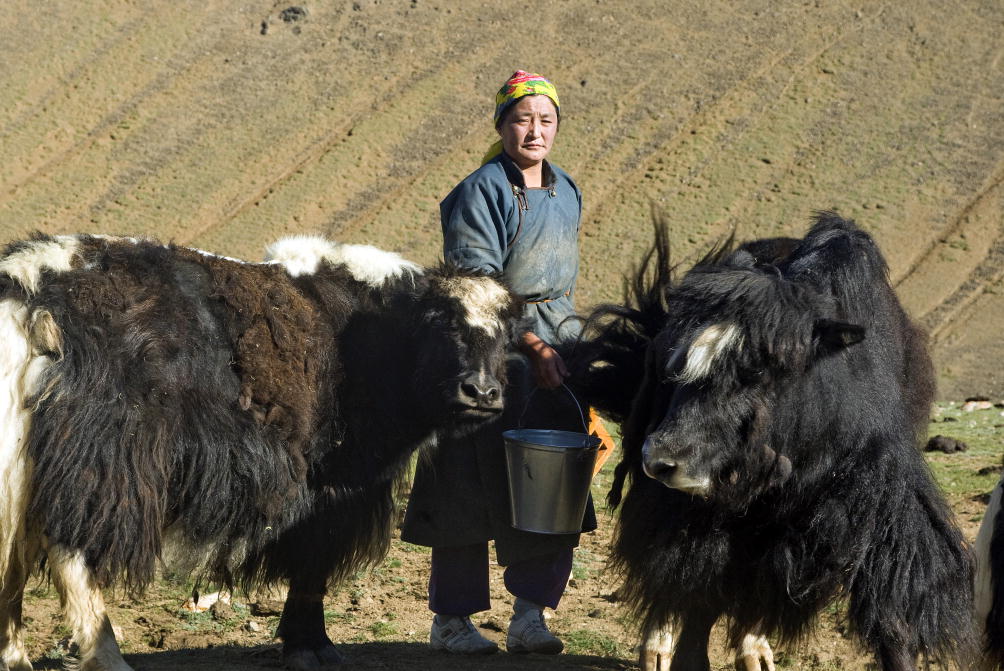
Preamble
24. We are committed to ending poverty in all its forms and dimensions, including by eradicating extreme poverty by 2030. All people must enjoy a basic standard of living, including through social protection systems. We are also determined to end hunger and to achieve food security as a matter of priority and to end all forms of malnutrition. In this regard, we reaffirm the important role and inclusive nature of the Committee on World Food Security and welcome the Rome Declaration on Nutrition and Framework for Action. We will devote resources to developing rural areas and sustainable agriculture and fisheries, supporting smallholder farmers, especially women farmers, herders and fishers in developing countries, particularly least developed countries.
This is a good start. The Committee on World Food Security was reformed in 2009 to include more diverse stakeholders and seems to have gotten more open to ideas coming from the NGO world as well. Its strengthening was also particularly important in view of the previous fragmentation of UN efforts between food aid (WFP), agricultural investment (IFAD) and other policy considerations (FAO). Giving the Committee more political relevance and financial means still could be an important step to reuniting efforts to achieve food security. The Rome Declaration, in turn, departs from the historical focus on providing food aid to combat undernutrition and commits to “enhance sustainable food systems by developing coherent public policies from production to consumption and across relevant sectors to provide year-round access to food that meets people’s nutrition needs and promote safe and diversified healthy diets”
28. We commit to making fundamental changes in the way that our societies produce and consume goods and services. Governments, international organizations, the business sector and other non-state actors and individuals must contribute to changing unsustainable consumption and production patterns, including through the mobilization, from all sources, of financial and technical assistance to strengthen developing countries’ scientific, technological and innovative capacities to move towards more sustainable patterns of consumption and production. We encourage the implementation of the 10-Year Framework of Programmes on Sustainable Consumption and Production. All countries take action, with developed countries taking the lead, taking into account the development and capabilities of developing countries.
While this goal does not specifically mention food consumption, unsustainable production patterns definitely apply to the agricultural sector. My worry is that despite lip service to sustainable consumption and production, global efforts in this regard have been limited to efficiency improvements and take no heed of rebound effects. While eliminating wasteful resource use is a good first step, at some point we need to talk about absolute consumption levels. I don’t see that this time is now, though.
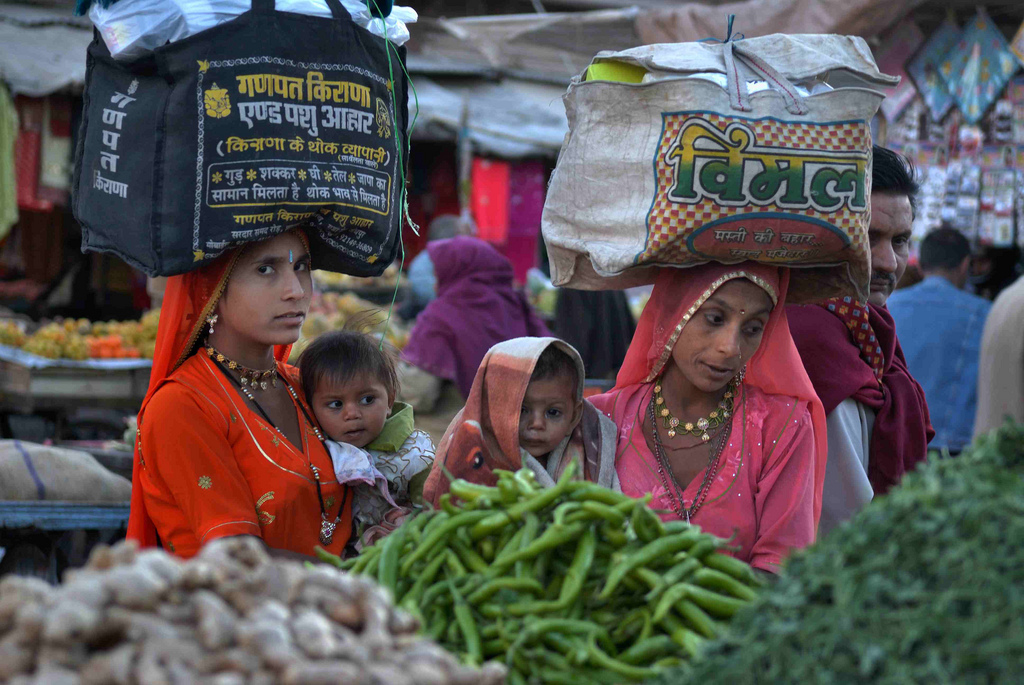
Goal 2. End hunger, achieve food security and improved nutrition and promote sustainable agriculture
2.1 By 2030, end hunger and ensure access by all people, in particular the poor and people in vulnerable situations, including infants, to safe, nutritious and sufficient food all year round
As many of the new Sustainable Development Goals, this is very ambitious. While ambitious goals may kick off unprecedented levels of policy development and financial support, there is the danger that unattainable targets will not be taken seriously. Let’s just make sure that hunger will not be “ended” by changing the definition of hunger, as the FAO has been accused of doing in the last stretch of “attaining” the Millennium Development Goal related to hunger.
2.2 By 2030, end all forms of malnutrition, including achieving, by 2025, the internationally agreed targets on stunting and wasting in children under 5 years of age, and address the nutritional needs of adolescent girls, pregnant and lactating women and older persons
It’s nice to see that nutritional needs are differentiated by gender and age. I wonder whether they also include addressing micronutrient malnutrition through unbalanced, high-calorie diets, as we see obesity levels rising in many emerging countries while nutritional needs are still unaddressed. Malnutrition is sadly no longer just a problem of the hungry.
2.3 By 2030, double the agricultural productivity and incomes of small-scale food producers, in particular women, indigenous peoples, family farmers, pastoralists and fishers, including through secure and equal access to land, other productive resources and inputs, knowledge, financial services, markets and opportunities for value addition and non-farm employment
Again, doubling productivity is a pretty lofty goal, but the barriers identified seem pretty sound. The FAO’s new strategy is one of ‘sustainable intensification‘ where resources are used more efficiently to increase production with the same land. Let’s just hope the ‘productive resources and inputs’ they are talking about aren’t patented seeds and expensive pesticides…
2.4 By 2030, ensure sustainable food production systems and implement resilient agricultural practices that increase productivity and production, that help maintain ecosystems, that strengthen capacity for adaptation to climate change, extreme weather, drought, flooding and other disasters and that progressively improve land and soil quality
Again with the sustainable intensification. My only fear is that this is the typical ‘let’s solve the sustainability puzzle by increasing efficiency’ response that is no real solution. On the other hand, agroecological methods have shown to be able to increase total food production while improving resilience; too bad that they don’t define how ‘sustainable food systems’ look in their eyes.
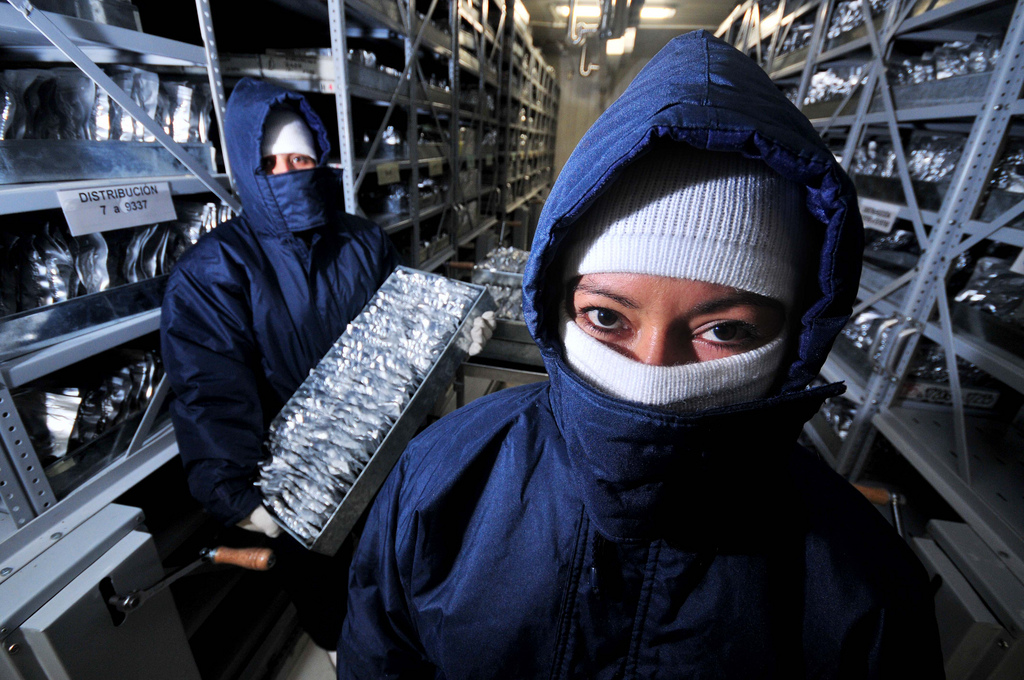
2.5 By 2020, maintain the genetic diversity of seeds, cultivated plants and farmed and domesticated animals and their related wild species, including through soundly managed and diversified seed and plant banks at the national, regional and international levels, and ensure access to and fair and equitable sharing of benefits arising from the utilization of genetic resources and associated traditional knowledge, as internationally agreed
2.a Increase investment, including through enhanced international cooperation, in rural infrastructure, agricultural research and extension services, technology development and plant and livestock gene banks in order to enhance agricultural productive capacity in developing countries, in particular least developed countries
2.b Correct and prevent trade restrictions and distortions in world agricultural markets, including through the parallel elimination of all forms of agricultural export subsidies and all export measures with equivalent effect, in accordance with the mandate of the Doha Development Round
2.c Adopt measures to ensure the proper functioning of food commodity markets and their derivatives and facilitate timely access to market information, including on food reserves, in order to help limit extreme food price volatility
These are all great points and highly overdue. It is clear that a lot of thought has gone into the formulation of these goals. While they occasionally read like the wish list of an extremely optimistic child at Christmas (let’s get all I want and all at the same time), the priority-setting message might be even more important than the implementability. And that message clearly signals that the paradigm of ‘let’s produce more in monocultures and feed the world’ has shifted, not the least through the outreach efforts of FAO’s Year of Family Farms last year and similar initiatives. Now let the funding follow!
Goal 12. Ensure sustainable consumption and production patterns
12.3 By 2030, halve per capita global food waste at the retail and consumer levels and reduce food losses along production and supply chains, including post-harvest losses
Wee they mention food waste!
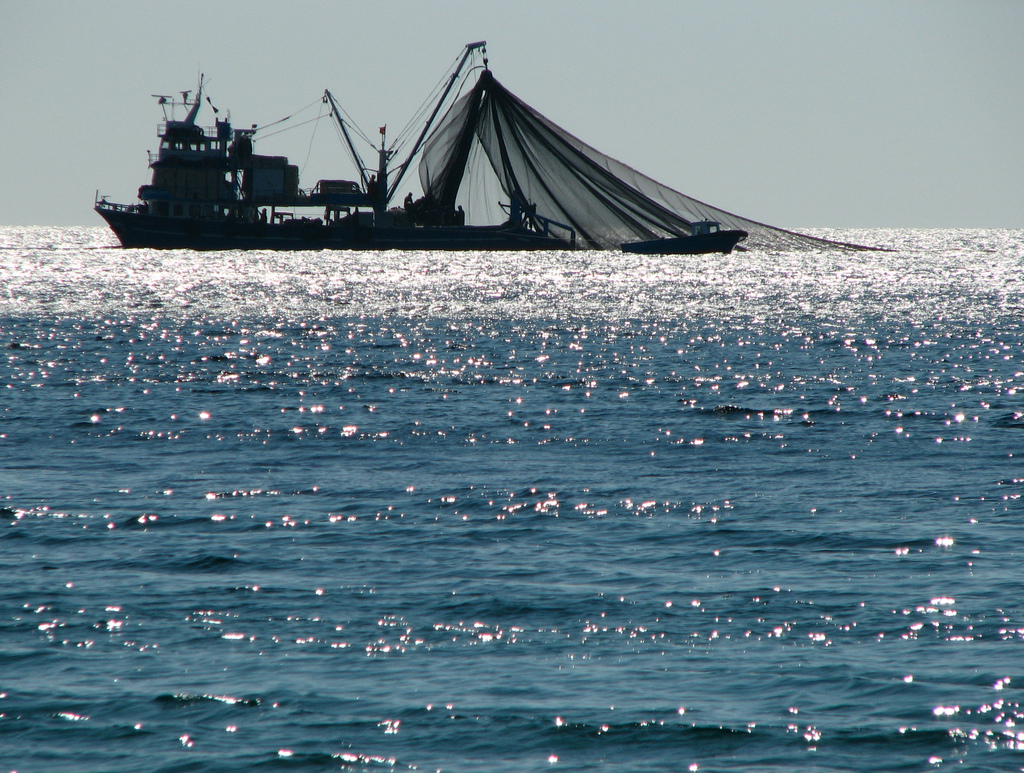
Goal 14. Conserve and sustainably use the oceans, seas and marine resources for sustainable development
14.4 By 2020, effectively regulate harvesting and end overfishing, illegal, unreported and unregulated fishing and destructive fishing practices and implement science-based management plans, in order to restore fish stocks in the shortest time feasible, at least to levels that can produce maximum sustainable yield as determined by their biological characteristics
14.6 By 2020, prohibit certain forms of fisheries subsidies which contribute to overcapacity and overfishing, eliminate subsidies that contribute to illegal, unreported and unregulated fishing and refrain from introducing new such subsidies, recognizing that appropriate and effective special and differential treatment for developing and least developed countries should be an integral part of the World Trade Organization fisheries subsidies negotiation
Focusing efforts on fishery management and policies is also valiant, though one could be rather pessimistic when reviewing past attempts at doing so. New efforts are definitely needed, though.
What are your thoughts on the SDGs?
Reblogged this on Dr. B. A. Usman's Blog.